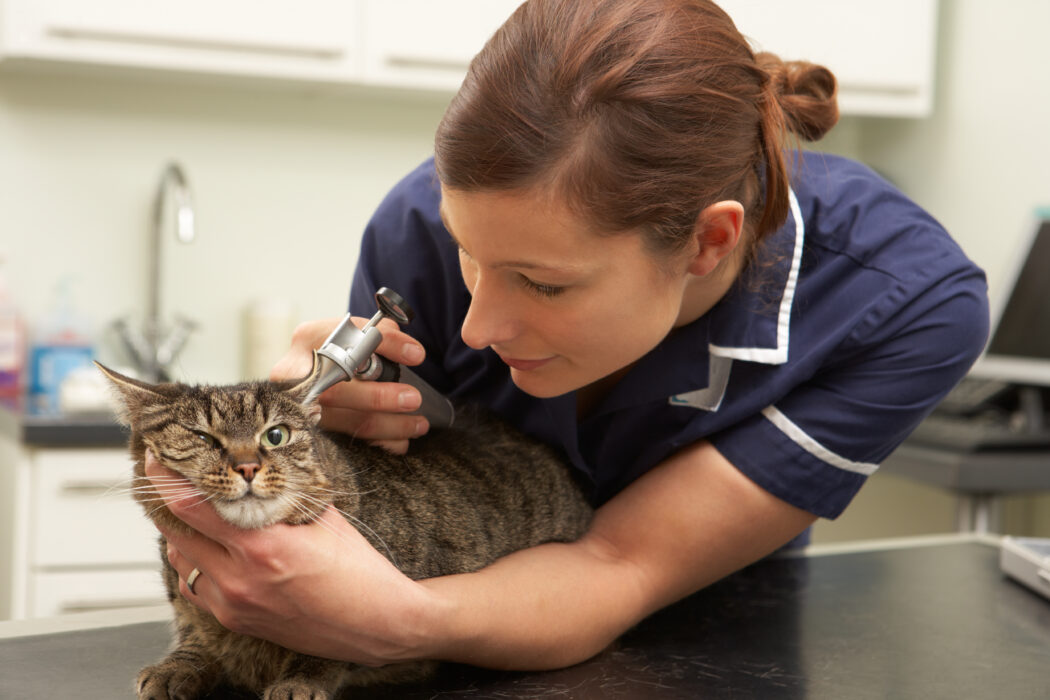Veterinary Technologists and Technicians are individuals who work in the field of veterinary medicine and are involved in the care and treatment of animals. They are often classified as having a realistic theme code in the Strong Interest Inventory assessment, as they work in a hands-on, practical environment and are responsible for performing a variety of technical tasks related to animal care and treatment.
These individuals typically work under the supervision of licensed veterinarians and are involved in tasks such as preparing animals for surgery, administering medications, collecting and analyzing laboratory samples, and maintaining equipment and supplies. They also play an important role in educating animal owners about the care and treatment of their pets, and they must be able to work well as part of a team and communicate effectively with both animals and people.
Veterinary Technologists and Technicians can specialize in various areas within the field of veterinary medicine, such as surgery, dentistry, or emergency and critical care. For example, some may focus on providing support to veterinarians during surgeries, while others may specialize in dental procedures for animals. Some may also specialize in emergency and critical care, providing support to veterinarians in the treatment of critically ill or injured animals.

Read about a career as a Veterinary Technologist and Technician, including information such as salary, educational requirements, daily tasks, and other career information.
Veterinary Technologists and Technicians use a range of tools and technologies in their work, including laboratory equipment, medical instruments, and computer software. These tools and technologies are designed to support the diagnosis, treatment, and care of animals.
One key tool used by Veterinary Technologists and Technicians is laboratory equipment, such as microscopes, centrifuges, and other diagnostic tools. These tools allow them to perform laboratory tests, analyze samples, and diagnose conditions in animals.
In addition to laboratory equipment, Veterinary Technologists and Technicians also use medical instruments, such as surgical instruments, dental equipment, and monitoring devices. These instruments are used to perform procedures, provide care, and monitor the health of animals.
The educational and training requirements for Veterinary Technologists and Technicians typically include a post-secondary education in veterinary technology or a related field. These programs provide a strong foundation in the technical knowledge and skills required to work in the field of veterinary medicine, including anatomy, physiology, pharmacology, and laboratory procedures.
Veterinary Technologists and Technicians often have certifications from industry organizations, such as the National Association of Veterinary Technicians in America (NAVTA). In addition to their education and certifications, Veterinary Technologists and Technicians may also benefit from hands-on experience working with animals. Continuing education and professional development are also important for Veterinary Technologists and Technicians, as the field of veterinary medicine is rapidly evolving and new treatments, procedures, and technologies are being developed all the time.
On average, the median annual salary for these individuals is around $34,000. One way to increase salary is to consider working in a different type of employer, such as a private veterinary practice, research facility, or government agency. These employers may offer higher salaries or other benefits, such as flexible schedules or opportunities for advancement. Some specializations within the field may offer higher salaries compared to others. For example, those who specialize in emergency and critical care, or surgical technology may have the potential to earn a higher salary as they are involved in more complex and higher-level procedures. Specializing in a niche area of veterinary technology such as zoological medicine, which involves working with exotic or wild animals, may also offer higher salaries.
Below are some employment trends for Veterinary Technologists and Technicians:
- Median Salary: $17.72 hourly, $36,850 annually
- Employment: 122,800 employees
- Projected growth (2021-2031): Much faster than average (11% or higher)
- Projected job openings (2021-2031): 15,500
Visit Our Strong Interest Inventory® Resource Page
Visit Our Myers-Briggs Type Indicator® Career Resource Database for Information on MBTI® Personality Type Careers
To Learn More About the Myers-Briggs Type Indicator, visit our About MBTI Test Page
Click on one of these to access more Realistic Theme Code Careers: Acupuncturist, Airline Pilot, Animal Trainer, Anesthesiologist Assistant, Baker, Barber, Bus Driver, Civil Engineer, Cardiovascular Technologist and Technician, Medical and Clinical Lab Technician, Computer Support Specialist, Game Warden, Forest Firefighter, Heating and Air Conditioning Mechanics, Recreational Protective Service Worker, Meat Trimmer, Molecular and Cell Biologist, Nanotechnology Engineering Technician, Oral and Maxillofacial Surgeon, Pathologist, Plumber, Radiologist, Police Patrol Officer, Surveyor, Telecommunications Engineering Specialist, Veterinarian, Welder, Zoologist and Wildlife Biologist.
Explore our Strong Interest Inventory® Blog Pages:
- Strong Interest Inventory Realistic Theme Explained
- Strong Interest Inventory Artistic Theme Explained
- Strong Interest Inventory Investigative Theme Explained
- Strong Interest Inventory Social Theme Explained
- Strong Interest Inventory Enterprising Theme Explained
- Strong Interest Inventory Conventional Theme Explained
Assessment Categories
References
- Bureau of Labor Statistics wage data and 2012-2022 employment projections Onetonline.org









